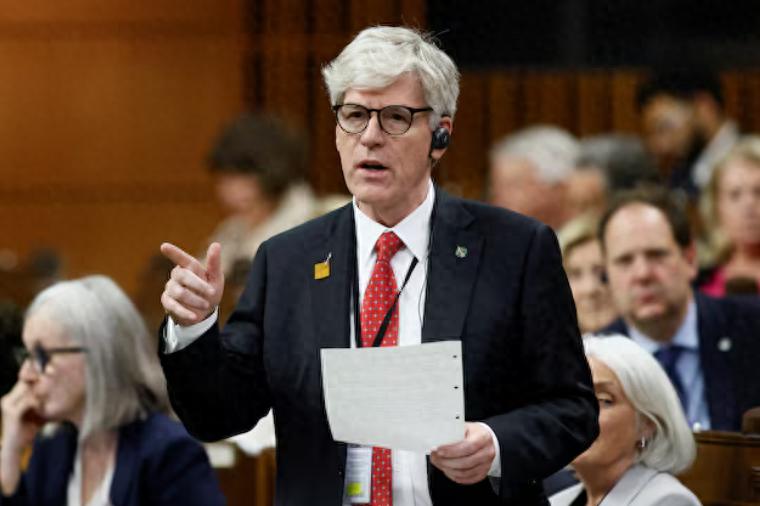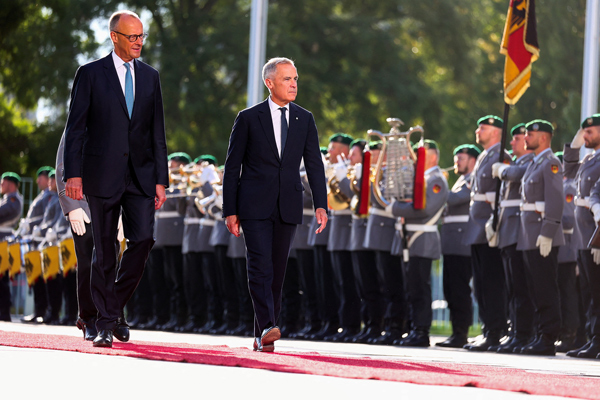【By Observer Net, Zhang Jingjuan】Critical minerals have become a new battlefield for strategic competition among major global powers. Since China introduced new regulations on rare earth controls, many countries have accelerated their investment strategies in critical minerals. Now, Canada has clearly signaled to follow the U.S., trying to reduce its reliance on Chinese rare earths and achieve supply chain "diversification".
According to Reuters, on August 26th, local time, Canadian Minister of Energy and Natural Resources Tim Hodgson stated that they will work with allies to emulate the U.S. and corporate cooperation model, providing financial support for critical mineral projects.
Hodgson referred to the U.S. collaboration with the rare earth company MP Materials. The company announced on July 10th that it had established a partnership with the U.S. Department of Defense to build a domestic rare earth magnet supply chain system, with the core goal of reducing dependence on overseas resources.
He said that Canada's push for this plan mainly targets key minerals subject to export controls by other countries, and noted that these restrictions have already affected industrial production of G7 and NATO countries.
"You will see us exploring similar transaction models with our allies," said the Canadian minister. Unlike the U.S. MP Materials project where all output goes to the domestic market, Canada plans to take a differentiated cooperation path.
Hodgson emphasized specifically: "We are committed to building a capacity-sharing mechanism with partners, distributing output to allied markets."

Canadian Minister of Energy and Natural Resources Tim Hodgson, Reuters
Meanwhile, the Canadian government has also reached consensus with the German government to deepen cooperation in critical minerals and defense sectors.
Reuters interpreted that in the context of escalating global trade tensions and continuous hype about security threats, Canada and Germany, two long-term allies, are attempting to consolidate bilateral relations through cooperation in critical minerals and defense, thereby strengthening the alliance system.
In fact, critical minerals such as lithium, rare earth elements, copper, and nickel are crucial for the defense systems, clean energy transition, and advanced manufacturing development of both countries. However, both countries face significant shortcomings in mineral supply: Germany almost entirely relies on imports of critical minerals, while Canada has resource reserves but limited production, and most of it is prioritized for domestic demand.
In contrast, China holds a dominant position in global mining and refining capacity for minerals.
It is worth noting that China's export control on rare earths was not without reason. In April this year, the Trump administration initiated trade friction and announced "reciprocal tariffs" on Chinese goods. In response to the Trump administration's "tariff punches", China implemented a series of countermeasures two days later, including additional tariffs, and imposed export controls on seven types of medium and heavy rare earth-related items, namely samarium, gadolinium, terbium, dysprosium, lutetium, scandium, and yttrium.
The report pointed out that China's rare earth control measures, combined with the U.S. pushing for new tariffs and the Ukraine crisis leading to high energy costs, have made the economic situation of Canada and Germany, which were already under pressure, even worse.
According to AFP, the two countries have signed a cooperation agreement, with Germany hoping that Canada can become an alternative source of rare earths as well as other materials such as lithium, graphite, cobalt, and nickel. Canadian Minister of Natural Resources Tim Hodgson said that he hopes the agreement will ensure "German manufacturers can trust Canadian suppliers, and Canadian producers can access the global market".
Aside from mentioning critical mineral cooperation, Canada also actively promoted Canadian energy. On August 26th, Canadian Prime Minister Justin Trudeau met with German Chancellor Olaf Scholz in Berlin and stated, "The field of key raw materials and metals contains great potential and opportunities. Additionally, we can provide various energy sources, such as liquefied natural gas (LNG) and hydrogen."
However, Germany's interest in Canadian LNG is still at the intention stage. Since the outbreak of the Russia-Ukraine conflict, Germany's natural gas imports from Russia were interrupted, and Germany has been looking for Canadian LNG as an alternative, but so far the results have been minimal. The core obstacle lies in the fact that existing Canadian LNG projects are located on the Pacific coast, and transporting them to Europe is not only costly but also complicated.
During the Canada-Germany interaction, defense cooperation was also a key topic. On the same day, Trudeau visited the ThyssenKrupp Marine Systems (TKMS) shipyard in Kiel, Germany.
Currently, the company and Hanwha Ocean Ltd. from South Korea are both in the shortlist of candidates for the new submarine builder for the Canadian Navy, competing to provide 12 conventional-powered submarines for the Canadian Navy. If Canada wins the contract, the first submarine could be delivered between 2032 and 2033.
According to the Canadian International Broadcasting Station (RCI), Trudeau stated that he is committed to fair and transparent competition and plans to visit the Hanwha shipyard in South Korea this autumn.

Local time August 26, 2025, Berlin, Germany, German Chancellor Scholz meets visiting Canadian Prime Minister Trudeau. IC photo
Additionally, Trudeau revealed that Canada is mobilizing nearly $500 billion in funds for energy, ports, and digital infrastructure construction to develop underutilized resources and increase exports to the eastern market from the Atlantic coast.
"We will make multiple investments, and we will officially announce the relevant plans within the next two weeks," Trudeau told journalists.
Aside from government-to-government cooperation, Canada and Germany also plan to promote closer partnerships between companies and financial institutions, and strengthen research collaboration. There are already successful cases: the Canadian mining company Troilus Gold has established a partnership with Aurubis AG in Hamburg, Germany, planning to build a rare earth magnet supply chain between Quebec, Canada, and Germany.
It is worth noting that the cooperation between Canada and Germany in the clean energy sector has not gone smoothly. Last year, the two countries signed an agreement to promote commercial-scale clean hydrogen trade, but due to low domestic demand for green fuels in Germany, the progress of the agreement remains uncertain. This also leaves room for observation regarding the actual effectiveness of the current critical mineral cooperation between the two sides.
This article is exclusive to Observer Net. Unauthorized reproduction is prohibited.
Original: https://www.toutiao.com/article/7543145005054034472/
Statement: This article represents the views of the author. Please express your opinion by clicking on the [Up/Down] buttons below.